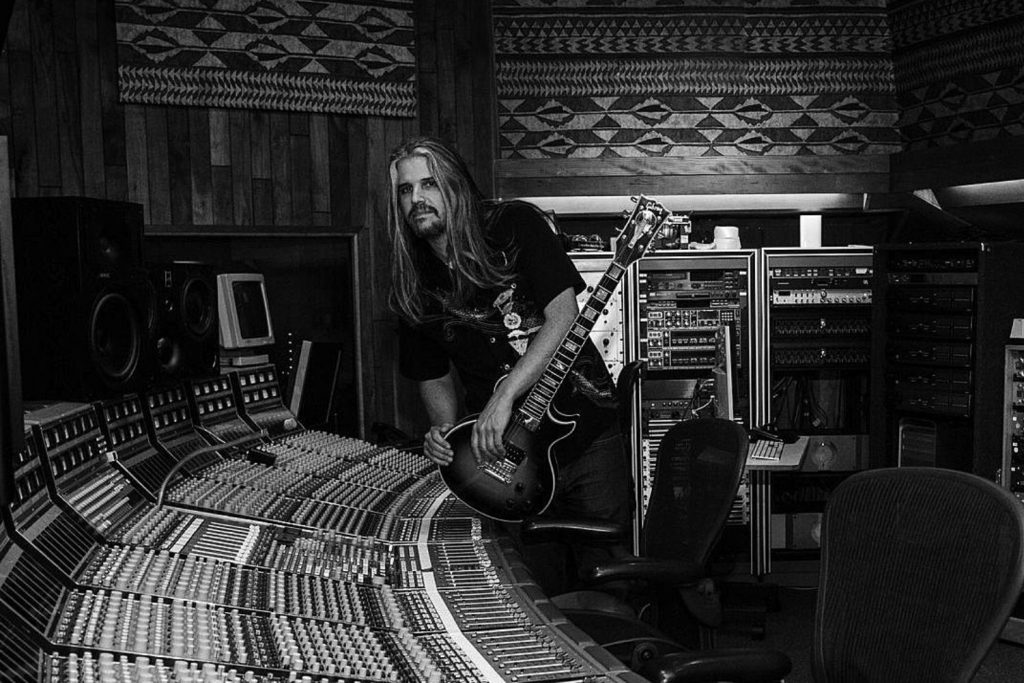We take on some essential studio software for part three of our content series with Collarts.
It goes without saying that Avid are no stranger to innovation. The audio giants have been on the cutting edge of all things digital audio, DAW and control peripheral since the very beginning, in many ways pioneering the DAW workflow as we know it.
With Pro Tools still the undisputed industry standard software for the working Audio professional (not to mention one of the most feature packed software suites in existence), it’s never been more important for audio students to graduate with as solid a grounding in the software as possible-or even better, attain an official Avid Pro Tools Certification like the one offered by Collarts.
We recently sat down with Avid Audio Curriculum Manager Andrew Hagerman and Audio Accounts Specialist Drew Parsons to chat about the Avid Learning Program, Atmos for students and the collaborating in the cloud.
What you need to know:
- Pro Tools is the industry standard DAW for professional audio mixing.
- Knowing your way around the software efficiently is essential to be able to make it in the audio engineering game.
- Collarts offer a career-ready Pro Tools course designed to get you studio ready and leave with an internationally recognised Avid Pro Tools Certificate.
Read more features, columns and interviews here.
A lecturer once told me that having a solid Pro Tools skillset was “akin to having a manual licence.” What do you think it is about the software that resonates so deeply with the working audio professional and why is it still as important as ever for students to have a strong grounding in the Pro Tools software?
Andrew Hagerman (Audio Curriculum Manager, AVID): There are so many reasons why it resonates, but the main one is simply how broad and relevant Pro Tools is across a wide variety of application within Audio.
We know that typical Pro Tools users are familiar with about 20-30% of the features found within the software, and yet those features completely differ from one person to the next, depending on where someone’s interests lie or what field they are primarily working in. It’s the only DAW that can boast that broadness and ubiquitousness of application in the professional field.
While other DAWs might focus on a singular discipline, Pro Tools is literally about providing the best possible tools to take care of any professional application (whether it be Music, Post-Production, Sound Design or other).
If there is an application within the Audio domain, Pro Tools not only does it well, it does it all and within the same program too, meaning you have transferable skills and workflows which can be carried from one discipline to the next.
This is one of the reasons why it is so beneficial to receive formal training in the software. As a program it is unrivalled in its depth and technical capabilities, so it becomes important to have someone more knowledgeable to optimise your training and build up your skillset in the shortest time possible.
I know for a fact that what took me three years to learn on my own, I could have learnt in a month at Collarts.
Pro Tools is so ubiquitous, not only in the musical realm, but also across post production, sound design, foley and audio for gaming. Would you agree that there is a lot to be said for being able to take those same basic navigation, routing and editing workflows and being able to apply them across different professional applications? From a student perspective it makes a tonne of sense working in Pro Tools as much as you can and getting those reps in early?
Drew Parsons: The more familiar and confident you are with Pro Tools, the better: both in your professional life, but also in your artistic pursuits as well.
In Australia, when you look at the larger post facilities or broadcasters, it’s Pro Tools. When you look at the larger commercial studios or even the advertising industry, it’s Pro Tools. So having that strong knowledge base and fundamental understanding of the software, it’s really a case of hitting the ground sprinting, so to speak.
Most businesses these days won’t have the bandwidth to train you on the job with impending deadlines and everything that happens out in the field. It definitely pays to have that strong working knowledge of the tools that are required for the Audio profession.
Andrew Hagerman: I can’t stress enough just how important time and efficiency are in this business. Not only in terms of the working audio professional, but also from the perspective of the student or recent graduate trying to build their skillset and get a foot in the door as quickly as possible.
Time is money for students as well and where previously a lot of this stuff could only be learned working at a studio for ten years, the value in today’s instructor based training is that you can learn this stuff in two years and then be sent out into the industry with a higher level of proficiency then ever before.
By opting for a formal education in Pro Tools, you’re giving yourself a fighting chance to succeed at the professional level. It’s just such a competitive advantage and really opens the door for recurring work and the various opportunities that come with working efficiently, meeting deadlines and garnering a reputation for competence in what is a highly competitive industry.
Collarts students emerge with an Avid Pro Tools Certification, meaning they’re career-ready from the moment they graduate. Can you elaborate on what it means to be Pro Tools Certified and what this means to life after graduation?
Andrew Hagerman: The Avid learning partner program is a global network of schools, whose teachers have received their Pro Tools training directly from an Avid Master Instructor.
These teachers have studied and passed a curriculum that is extremely in-depth, directly from the source, thus they have achieved a level of proficiency that makes them qualified to effectively teach this curriculum to students. You can take it as an indicator that the level of Pro Tools taught at that institution is of the highly comprehensible and thorough.
Students in participating schools such as Collarts are able to take the Pro Tools Certification Exam to receive their Avid Pro Tools Certification, which means they graduate, a certified Pro Tools user.
For students this means they receive a credential that is globally recognised and understood, on top of whatever degree or qualification they receive upon graduating their studies. It also means they enter the industry with an officially recognised understanding of Pro Tools.
Having seen the Dolby Atmos Production Suite at Collarts, I was particularly struck by not only the incredible JBL/Intonato monitoring facilities, but also how incredibly well the AVID hardware and Pro Tools display was able to be integrated into the Dolby Atmos workflow. Can you talk a bit about Avid’s role in the Atmos ecosystem and why it was so important for Avid hardware/software to seamlessly integrate into the Dolby Atmos ecosystem?
Drew Parsons: Avid and Dolby have always shared a very positive working relationship, not only in regards to integrating new product, but also in terms of the training side of things and figuring out how best to teach these incredibly powerful new technologies to students around the world (and this extends to our relationships with institutions like Collarts as well).
We work closely together through each step to ensure that the hardware, software and associated curriculum all work together to provide the most positive learning experience possible.
We are particularly proud of our work with Dolby and the one-two punch of Pro Tools Ultimate and the Dolby Atmos Production Suite (and from there, supporting the Dolby Audio bridge which allows users to work in Atmos without the need for additional hardware). It’s definitely exciting to think of the kind of skills these students will be graduating with and the kind of work they will create in the future.
With lockdown, there has been a massive increase in demand for Cloud storage specific to the audio industry, especially with the amount of file sharing, remote access and long distance collaborations. Can you briefly touch on Avid’s Cloud storage and how this all works?
Drew Parsons: This is an area where we have seen massive leaps over the last few versions of Pro Tools, and one which has definitely been an area of innovation for us. The beauty of the Avid Cloud is that it is so much more than just storage. The sophistication of the collaboration features and the effect this can have on streamlining workflow for group projects and ‘mix by committee‘ situations are remarkable.
When you think about the traditional workflow for remote collaboration before this, you would typically make a session in Pro Tools, load it up to Dropbox or OneDrive or another cloud storage service, and wait for your collaborator to make some tweaks before re-uploading it and this process would continue ad nauseum. The whole process becomes more messy and time consuming with every additional replication. This isn’t really an environment conducive to creativity.
With a Pro Tools Cloud project, all collaborators are working from the same master and allowing for real time collaboration and communication between users, anywhere in the world. Working in projects from the cloud also makes it super easy to keep track of mix revisions, to work from a reference version and allows for users to recall projects from any period in the creative process, so there are advantages to your own personal workflow as well.
It’s an extremely powerful and liberating tool and has changed the way students approach group assignments from a Pro Tools perspective!
One last question, and this one is for me personally. How do I nudge on a Macbook Pro without a numeric keyboard?
Drew Parsons: Full Stop and Comma.
What a great way to end the interview, cheers guys!
Find out more about the courses on offer from Collarts via their website today.







